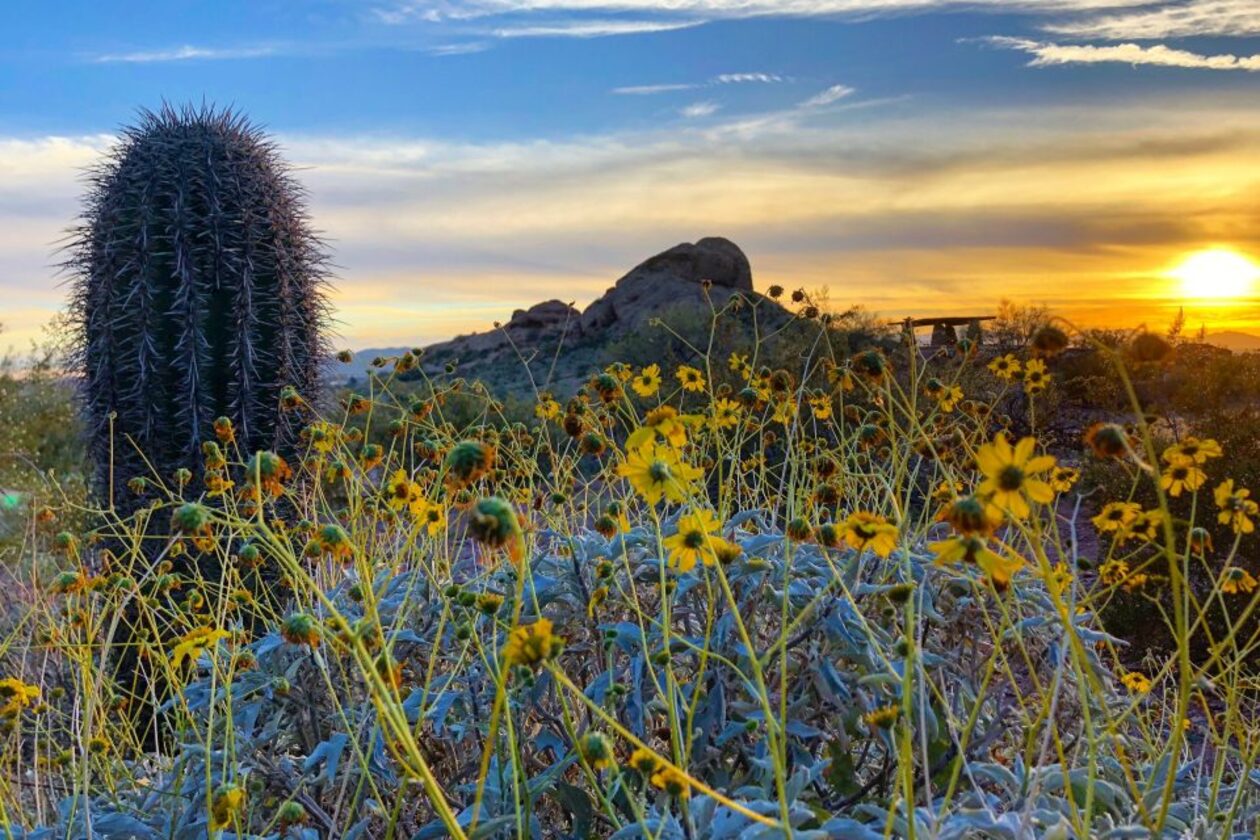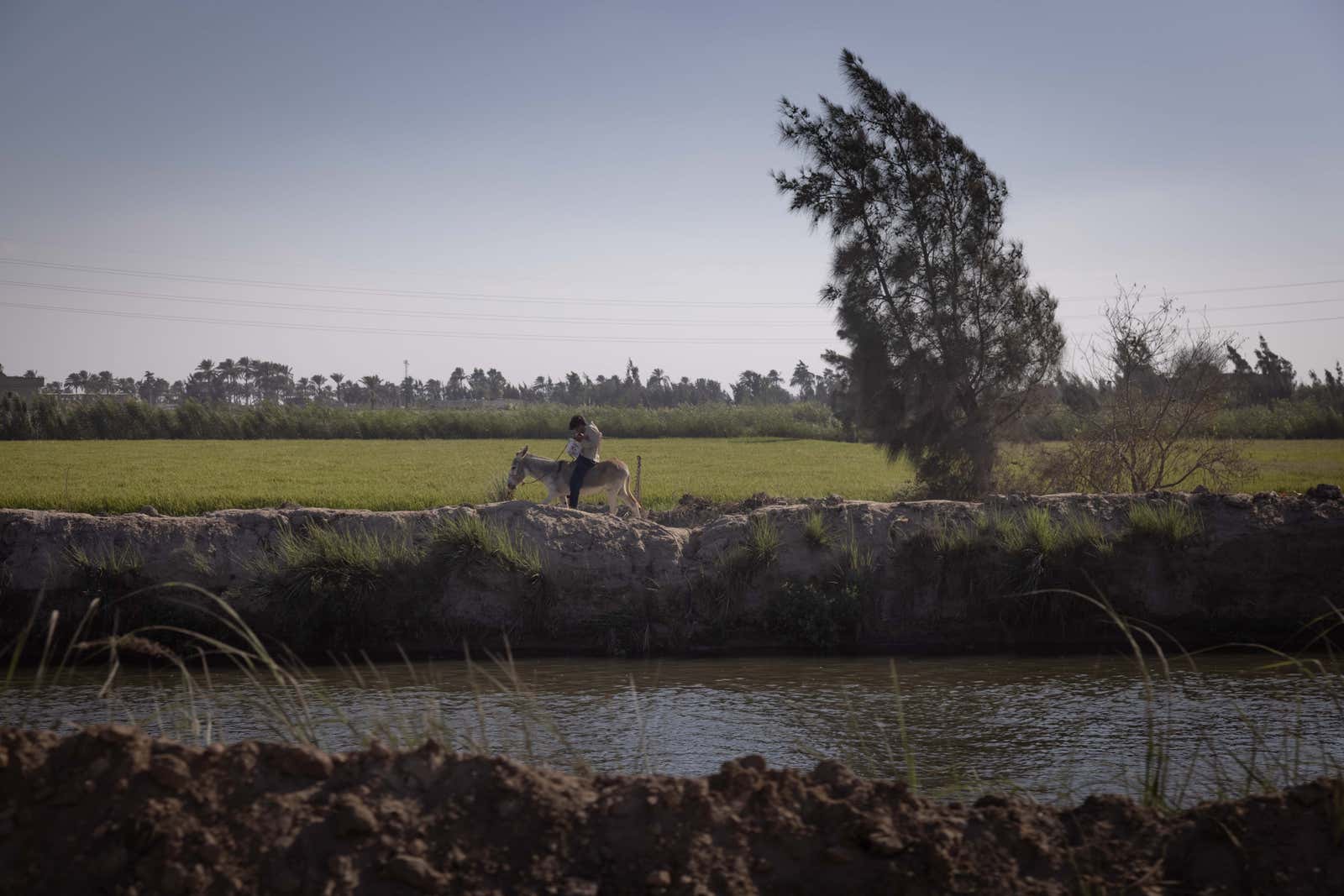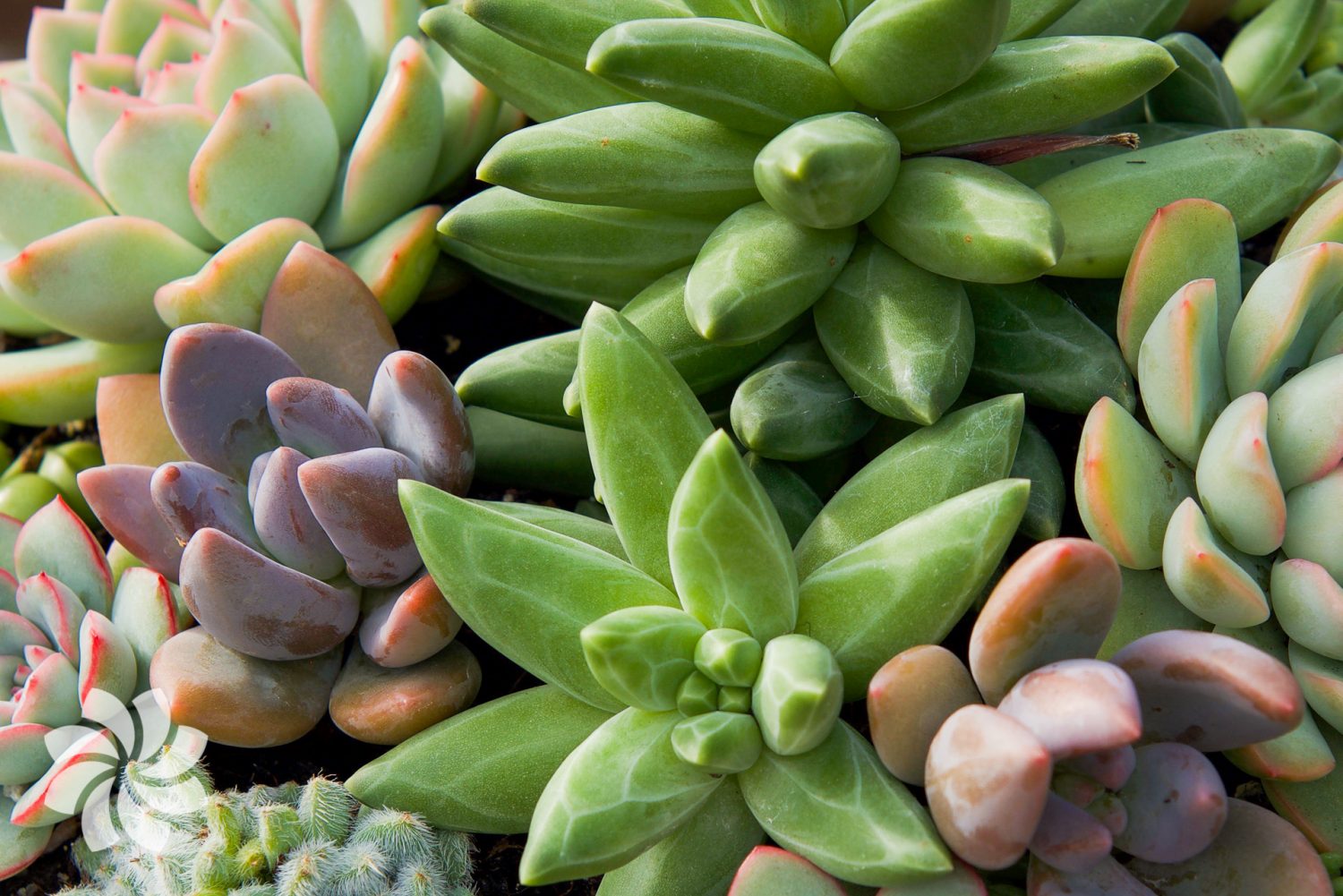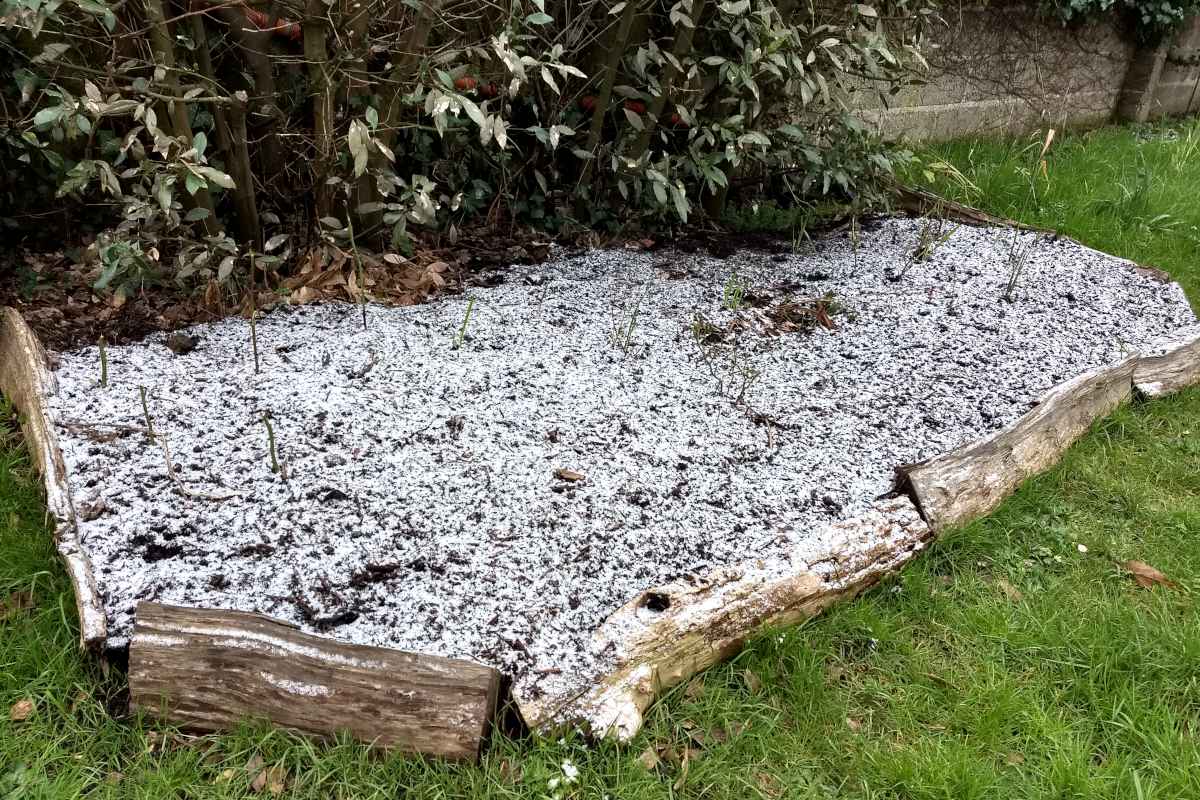Home>Gardening News and Trends>Latest News>How Did Shrubs Adapt To The Desert


Latest News
How Did Shrubs Adapt To The Desert
Published: October 18, 2023
Discover the latest news on how shrubs have successfully adapted to survive in the harsh conditions of the desert. Explore their remarkable strategies and gain insights into their ability to thrive in arid environments.
(Many of the links in this article redirect to a specific reviewed product. Your purchase of these products through affiliate links helps to generate commission for Chicagolandgardening.com, at no extra cost. Learn more)
Table of Contents
Introduction
Deserts are harsh and unforgiving environments, characterized by extreme temperatures, scarce water resources, and limited vegetation. Yet, amidst this seemingly inhospitable landscape, shrubs have managed to not only survive but thrive. These resilient plants have evolved remarkable adaptations that enable them to endure the harsh conditions of the desert.
Shrubs, also known as woody plants, are a type of vegetation characterized by their multi-stemmed, perennial growth habit. They are distinguished from trees by their shorter stature and bushy appearance. Shrubs play a crucial role in desert ecosystems, as they serve as a primary source of food and shelter for numerous organisms, including insects, birds, and mammals.
While the desert presents numerous challenges for plant survival, shrubs have developed a suite of adaptations that allow them to overcome these obstacles. These adaptations primarily revolve around water conservation, drought tolerance, and efficient resource utilization.
In this article, we will explore the fascinating world of desert shrubs and delve into the various mechanisms they employ to adapt to their arid surroundings. From their remarkable water conservation strategies to their specialized root, leaf, and reproductive adaptations, we will uncover the secrets behind their ability to thrive in such a challenging environment. Moreover, we will also explore the intricate interactions between desert shrubs and the animals that rely on them for survival.
By gaining a deeper understanding of how shrubs adapt and thrive in the desert, we can not only appreciate the resilience and ingenuity of these plants but also learn valuable lessons about how to coexist and adapt to our ever-changing world. So, let us embark on this journey into the desert, where shrubs stand as testaments to the extraordinary power of adaptation.
Definition of Shrubs
Shrubs are a type of woody plant that is characterized by their multi-stemmed growth habit and relatively shorter height compared to trees. They are known for their bushy appearance, with branches starting close to the ground and spreading outward. Shrubs can be found in a variety of habitats, including forests, grasslands, and deserts.
Unlike trees, which have a single main stem or trunk, shrubs typically have multiple stems originating from the base of the plant. These stems can grow and branch out extensively, forming a dense and compact structure. This growth habit is an important adaptation for shrubs, as it allows them to maximize their surface area for photosynthesis and compete for sunlight in crowded environments.
The height of shrubs can vary widely, ranging from a few centimeters to several meters. Some shrubs may even have a creeping or trailing growth habit, with stems that lie along the ground and root at nodes, enabling them to spread and colonize new areas.
Shrubs come in a diverse array of shapes, sizes, and foliage characteristics. Their leaves can be broad and evergreen, needle-like and evergreen, or deciduous. Shrubs also produce flowers of various colors, shapes, and sizes, which attract pollinators such as bees, butterflies, and birds. Some shrubs even bear fruits or seeds that are consumed by animals or dispersed by the wind.
Shrubs are highly adaptable plants and can be found in habitats with varying conditions. They are capable of thriving in a wide range of climates, from arctic tundras to tropical rainforests. In the desert, shrubs have evolved unique adaptations to withstand the extreme conditions, making them an essential component of desert ecosystems.
In summary, shrubs are woody plants with multi-stemmed growth habits and relatively shorter heights compared to trees. Their ability to adapt to different environments and their important ecological roles make them fascinating and significant components of the natural world.
The Desert Environment
The desert is a harsh and arid environment characterized by low and unpredictable precipitation, high temperatures, and limited vegetation. It covers approximately one-third of the Earth’s land surface and can be found in various regions around the world, from hot and sandy deserts like the Sahara in Africa to cold and rocky deserts like the Gobi in Asia.
Deserts are typically defined by their extreme lack of water. The rainfall in these areas is scarce, often averaging less than 250 millimeters (10 inches) per year. This limited precipitation is further exacerbated by the phenomenon of evaporation, where the intense heat causes water to quickly evaporate from the ground, reducing available moisture even further.
The dry and sandy soils of the desert have poor water-holding capacity and are generally low in nutrients. This further challenges plant growth and survival, as adequate water and nutrients are essential for sustaining life. Additionally, the intense heat and high levels of solar radiation in the desert can cause rapid evaporation and dehydration, making it even more difficult for plants to retain moisture.
Temperature variations in the desert are extreme, with scorching hot days and cold nights. During the day, temperatures can soar to well above 40 degrees Celsius (104 degrees Fahrenheit), while at night, they can drop to near freezing temperatures. Such extreme temperature fluctuations further stress plant and animal life in the desert.
Despite the harsh conditions, the desert is not completely devoid of life. A wide variety of species have evolved to withstand and thrive in these challenging environments. From hardy plants like shrubs to specialized animals like camels and reptiles, desert organisms have developed unique adaptations to cope with the limited resources and extreme conditions found in this ecosystem.
Understanding the unique characteristics of the desert environment is crucial for comprehending the adaptations of plants like shrubs. These adaptations play a vital role in the survival and ecological functioning of the desert ecosystem, allowing plants to harness available resources while minimizing water loss and withstanding the intense heat and aridity of the desert.
In summary, the desert environment is characterized by low precipitation, high temperatures, and limited vegetation. The harsh conditions pose numerous challenges for survival, requiring plants and animals to develop specialized adaptations in order to thrive in this unique and unforgiving ecosystem.
Adaptations of Shrubs to the Desert
Shrubs have evolved a range of remarkable adaptations that enable them to survive and thrive in the harsh conditions of the desert. These adaptations primarily revolve around water conservation, drought tolerance, and efficient resource utilization. Let’s explore some of the key adaptations that allow shrubs to thrive in this challenging environment.
Water Conservation Mechanisms:
- Succulent Stems: Some desert shrubs have succulent stems, which are capable of storing water. These fleshy stems allow shrubs to store large amounts of water during periods of rainfall or intense moisture and use it during dry spells.
- Reduced Leaf Surface: Many desert shrubs have evolved to have reduced leaf surfaces or modified leaf structures, such as needle-like leaves or spines. This helps to minimize water loss through transpiration, as the smaller surface area reduces the exposure to drying winds.
- Thick Cuticle: The leaves of desert shrubs also often have a thick wax-like cuticle on the surface, which reduces water loss through evaporation.
- Leaf Orientation: Another adaptation is the ability of some desert shrubs to orient their leaves vertically or horizontally. This helps to reduce the surface area exposed to the sun, thereby minimizing water loss through evapotranspiration.
Drought Tolerance Strategies:
- Dormancy: During extended periods of drought, some desert shrubs enter a state of dormancy, temporarily ceasing growth and conserving energy until water becomes available again.
- Deep Root Systems: Many desert shrubs have deep and extensive root systems that can reach water sources deep underground. This allows them to access water that is beyond the reach of other plants.
- Hydrophobicity: Some desert shrubs possess hydrophobic (water-repellent) leaves and stems, which prevent precious water droplets from being lost to the hot desert winds.
Efficient Resource Utilization:
- Efficient Nutrient Absorption: Desert shrubs have efficient nutrient uptake mechanisms, enabling them to extract essential nutrients from the nutrient-poor desert soils.
- Reduced Transpiration: Shrubs have developed adaptations to reduce water loss through transpiration, which is the process by which water evaporates from the leaves. This reduction in transpiration helps to conserve water during dry periods.
These adaptations allow desert shrubs to thrive in the arid and challenging desert environment. By conserving water, tolerating drought, and efficiently utilizing available resources, shrubs are able to not only survive but also contribute to the ecological stability and biodiversity of desert ecosystems.
Water Conservation Mechanisms
One of the most critical challenges for shrubs in the desert is the scarcity of water. To overcome this obstacle, desert shrubs have developed various water conservation mechanisms that allow them to effectively manage and store water resources. These adaptations help them cope with the arid conditions and reduce water loss, promoting their survival and growth in these challenging environments.
Succulent Stems: Many desert shrubs have succulent stems that function as water storage organs. These fleshy stems are capable of storing large amounts of water when it is available, such as during occasional rainfall or periods of high humidity. During dry spells, when water is scarce, shrubs can utilize the stored water in their stems to meet their hydration needs.
Reduced Leaf Surface: To minimize water loss through evaporation, desert shrubs have evolved to have reduced leaf surfaces. Some shrubs have modified their leaf structures, developing needle-like leaves or spines. These modifications reduce the overall surface area exposed to the drying effects of the desert winds, thus minimizing water loss through transpiration.
Thick Cuticle: The leaves of desert shrubs often have a thick wax-like layer called the cuticle. This cuticle acts as a protective barrier, reducing water loss through evaporation. The thick cuticle helps to maintain moisture within the plant and shields the leaves from excessive heat and aridity.
Leaf Orientation: Another water conservation adaptation seen in desert shrubs is the ability to orient their leaves vertically or horizontally. By changing the orientation of their leaves, shrubs reduce the exposure of leaf surfaces to direct sunlight, limiting water loss through evapotranspiration. Vertical leaf orientation can reduce the surface area directly exposed to the sun, while horizontal orientation can create shade and decrease overheating.
These water conservation mechanisms allow desert shrubs to efficiently utilize and retain the limited water resources in their surrounding environment. By reducing water loss through various adaptations, shrubs can enhance their survival and maintain the necessary hydration to sustain their growth and reproduction.
Drought Tolerance Strategies
In the water-scarce and unpredictable conditions of the desert, shrubs have evolved remarkable strategies to withstand and survive extended periods of drought. These drought tolerance strategies enable them to conserve water, reduce water loss, and maintain their physiological functions even in the face of extreme aridity.
Dormancy: When water becomes extremely scarce, some desert shrubs enter a state of dormancy. Dormancy allows them to slow down their metabolic processes and conserve energy until more favorable conditions, such as rainfall, return. By entering dormancy, shrubs can minimize their water requirements and withstand prolonged periods of drought without suffering irreversible damage.
Deep Root Systems: Many desert shrubs have developed deep and extensive root systems that reach deep into the ground in search of water. These long roots enable them to access water sources that are beyond the reach of other plants with shallower root systems. By tapping into underground water reserves, shrubs can sustain themselves during dry periods when surface water is scarce or non-existent.
Hydrophobicity: In desert environments with sporadic rainfall, some shrubs have adapted unique leaf characteristics to minimize water loss. These shrubs have hydrophobic (water-repellent) leaves and stems that prevent water droplets from being absorbed or lost to the atmosphere. This adaptation helps to conserve any water that does come in contact with the plant, allowing the shrubs to make the most of every drop of water they receive.
Efficient Water Use: Desert shrubs have also evolved mechanisms to use water more efficiently. They exhibit lower rates of transpiration, which is the process by which water is lost from the plant through evaporation from the leaves. By reducing transpiration rates, shrubs can conserve water and maintain a positive water balance even in arid environments. Additionally, many desert shrubs have adapted to have a higher leaf water-use efficiency, meaning they are able to photosynthesize and grow using less water compared to plants in more water-rich environments.
Through these drought tolerance strategies, shrubs not only survive but also thrive in the harsh desert conditions. By conserving water, accessing underground sources, and maximizing the use of available water, desert shrubs demonstrate their remarkable ability to adapt and tolerate extended periods of drought.
Root Adaptations
Root adaptations play a crucial role in enabling shrubs to survive and thrive in the challenging desert environment. These adaptations allow shrubs to efficiently utilize and access water from the limited and often unpredictable water sources found in arid regions. Let’s explore some of the key root adaptations of desert shrubs:
Deep Root Systems: Desert shrubs commonly possess deep root systems that extend deep into the soil. These long and extensive roots enable shrubs to tap into water sources that are below the surface, such as groundwater, providing them with a reliable supply of water during dry periods. The ability to access deeper water reserves sets desert shrubs apart from other plants with shallower root systems, allowing them to thrive in arid conditions.
Horizontal Spreading Roots: Some desert shrubs have horizontal spreading roots. These roots spread out horizontally near the soil surface, allowing shrubs to capture water during rare rainfall events. The horizontal spreading roots also help to stabilize the soil, preventing erosion and promoting water infiltration.
Mycorrhizal Associations: Desert shrubs often form symbiotic relationships with mycorrhizal fungi. These fungi form a mutually beneficial association with the shrub’s roots, helping in nutrient absorption and water uptake. The fungi extend the root surface area, enhancing the shrub’s ability to locate and absorb nutrients and water in the nutrient-poor desert soils.
Adventitious Roots: Some desert shrubs develop adventitious roots, which are roots that form from non-root tissues. These roots often emerge from the lower stems or woody parts of the shrub. Adventitious roots aid in water absorption, particularly during rainfall events, allowing the shrub to quickly take advantage of available water resources and replenish its moisture reserves.
Taproots: Certain desert shrubs possess taproots, which are long, thick primary roots that extend vertically into the ground. Taproots allow shrubs to penetrate deep into the soil, reaching water sources that are beyond the reach of other plants. This vertical root growth is particularly advantageous in desert environments where water may be found at greater depths.
These root adaptations enable desert shrubs to effectively access water resources, withstand drought, and thrive in arid environments. By tapping into deeper water reserves, forming beneficial relationships with fungi, and utilizing their unique root structures, shrubs demonstrate their resilience and ability to adapt to the challenging conditions of the desert.
Leaf Adaptations
Leaf adaptations are crucial for desert shrubs as they help reduce water loss and maximize resource utilization in the arid and hot desert environments. These adaptations allow shrubs to thrive by conserving water, minimizing heat absorption, and optimizing photosynthesis. Let’s explore some of the key leaf adaptations of desert shrubs:
Reduced Leaf Surface: Many desert shrubs have evolved to have reduced leaf surfaces as a strategy to minimize water loss through transpiration. The smaller leaf size reduces the surface area exposed to the drying winds and intense heat of the desert, hence conserving precious water resources within the plant.
Thick Cuticle: Desert shrubs often have leaves with a thick wax-like layer called a cuticle. This cuticle acts as a protective barrier against excessive water loss through evaporation. It also helps to reduce the amount of solar radiation absorbed by the leaf, preventing overheating in the scorching desert sun.
Succulent Leaves: Some desert shrubs have succulent leaves that function as water storage organs. These leaves are typically fleshy and capable of storing water for prolonged periods. The stored water can be accessed and utilized by the plant during dry spells when water is scarce, allowing the shrub to maintain its physiological functions and survive in the harsh desert conditions.
Leaf Orientation: Leaf orientation is an important adaptation in desert shrubs. Some species have vertically oriented leaves, which helps to reduce the exposure of the leaf surface to direct sunlight. This vertical positioning allows for the reduction of heat absorption and minimizes water loss through evapotranspiration. Other shrubs have horizontally oriented leaves that provide shade and help trap moisture, preventing excessive evaporation in the surrounding environment.
Leaf Hairs: Many desert shrubs have leaf surfaces covered with tiny hairs. These leaf hairs help to create a microclimate around the leaf surface, trapping moisture and reducing air movement that could lead to water loss. The hairs also act as a protective layer, reflecting sunlight and reducing heat absorption.
Through these leaf adaptations, desert shrubs have developed strategies to optimize water usage, minimize heat stress, and maximize their ability to utilize available resources in the arid desert environment. The combination of reduced leaf surfaces, thick cuticles, succulent leaves, strategic leaf orientation, and leaf hairs enable shrubs to thrive and flourish in the challenging conditions of the desert.
Reproductive Adaptations
Reproductive adaptations are crucial for the survival and persistence of desert shrubs in their harsh and unpredictable environments. These adaptations enable shrubs to reproduce and disperse their offspring effectively, even in the face of limited resources and challenging conditions. Let’s explore some of the key reproductive adaptations of desert shrubs:
Drought-Tolerant Seeds: Desert shrubs often produce seeds that are adapted to withstand long periods of drought. These seeds have specialized structures and protective coatings that allow them to remain dormant and viable under arid conditions. This ensures that the seeds can germinate and establish new plants when favorable conditions, such as rainfall, occur.
Seed Dispersal Mechanisms: Desert shrubs employ various mechanisms to disperse their seeds over long distances. One common method is the production of lightweight seeds equipped with structures that enable wind dispersal, such as feathery bristles or parachutes. This allows the seeds to be carried away from the parent shrub and increases their chances of finding suitable growing conditions in different locations.
Seed Bank Strategies: Some desert shrubs have developed seed bank strategies, where they produce large numbers of seeds that remain dormant in the soil until favorable conditions for germination occur. This ensures a ready supply of seeds that can quickly germinate and establish new plants when suitable moisture levels and temperatures are present.
Clonal Reproduction: Clonal reproduction is a common strategy among desert shrubs. They can reproduce asexually by producing new shoots or suckers from the parent plant. This allows the shrub to rapidly colonize and occupy available space, increasing its chances of survival and persistence in the often-competitive desert environment.
Flower Adaptations: Desert shrubs often have specialized floral adaptations to maximize pollination success. They may produce flowers with vibrant colors and strong scents to attract specific pollinators, such as bees, butterflies, or birds. Some desert shrubs also synchronize their flowering with periods of increased pollinator activity, optimizing the chances of successful reproduction.
Through these reproductive adaptations, desert shrubs ensure the continuation of their species in the fragile and challenging desert ecosystem. By producing drought-tolerant seeds, utilizing efficient dispersal mechanisms, maintaining seed banks, and employing clonal reproduction and specialized flower adaptations, shrubs have evolved strategies to overcome the adversity of their arid surroundings and ensure the survival of future generations.
Interactions with Desert Animals
Desert shrubs play a vital role in the survival and sustenance of numerous animal species in the harsh desert environment. These shrubs provide essential resources, such as food, shelter, and nesting sites, which support a diverse and interconnected web of desert life. Let’s explore some of the key interactions between desert shrubs and the animals that rely on them:
Food Sources: Desert shrubs offer a crucial source of food for a variety of desert wildlife. Many birds, like the Greater Roadrunner or Cactus Wren, feed on the fruits and seeds produced by desert shrubs. Insects, such as bees and butterflies, seek nectar from the flowers of these shrubs. Even larger herbivores, such as desert ungulates like the Desert Bighorn Sheep, rely on shrubs as an important part of their diet.
Shelter and Nesting Sites: Desert shrubs provide much-needed shelter and nesting sites for a range of desert animals. The dense structure and thorny branches of shrubs offer protection from predators and harsh environmental conditions. Birds often construct their nests within the branches of shrubs, utilizing the camouflage and protection they provide. Small mammals, like desert rodents, also make use of the dense shrubbery for shelter and creating burrows.
Pollination: Desert shrubs rely on animal pollinators to facilitate their reproduction. Insects, birds, and even bats visit the flowers of shrubs in search of nectar or pollen, inadvertently transferring pollen from one flower to another as they feed. This pollination process is crucial for the shrub’s reproduction, ensuring the production of fruits and seeds.
Seed Dispersal: Animals play a significant role in the dispersal of shrub seeds. Birds and mammals consume fruits or seeds from shrubs, often carrying them to new locations in their digestive tracts or caching them for later consumption. These animals become inadvertent seed dispersers, aiding in the colonization of new areas and the establishment of shrub populations away from the parent plant.
Mutualistic Relationships: Some desert shrubs form mutualistic relationships with specific animal species. For instance, certain shrubs have specialized structures or adaptations that provide shelter and food for ants. In return, the ants protect the shrub from herbivores or competing plants, creating a mutually beneficial relationship known as mutualism.
These interactions between desert shrubs and animals illustrate the intricate web of dependencies that characterize desert ecosystems. Desert shrubs provide crucial resources for food, shelter, nesting, pollination, and seed dispersal, sustaining a diverse community of organisms in this challenging environment. The survival and well-being of both shrubs and desert wildlife are intricately linked, highlighting the importance of conservation efforts to maintain these fragile and interconnected ecosystems.
Conclusion
The adaptations of shrubs to the desert environment are a testament to the remarkable resilience and ingenuity of these plants. Through their evolved mechanisms for water conservation, drought tolerance, efficient resource utilization, and reproductive strategies, desert shrubs have successfully conquered the challenges posed by arid and harsh conditions. These adaptations enable shrubs to not only survive but thrive in the harsh desert landscapes, playing a crucial role in the delicate balance of desert ecosystems.
Desert shrubs have developed a variety of water conservation mechanisms to cope with the scarcity of water in their arid habitats. From succulent stems and reduced leaf surfaces to thick cuticles and specialized leaf orientations, these adaptations minimize water loss and maximize water storage. Additionally, their drought tolerance strategies, such as dormancy and deep root systems, allow them to persist through prolonged dry periods.
Efficient resource utilization is another key adaptation of desert shrubs. By optimizing nutrient absorption, reducing transpiration rates, and conserving limited resources, shrubs are able to make the most of the nutrients and water available in their arid environments.
Reproductive adaptations ensure the survival and propagation of desert shrubs in hostile desert landscapes. From producing drought-tolerant seeds and employing various dispersal mechanisms to forming symbiotic relationships and utilizing clonal reproduction, shrubs have evolved strategies to overcome the challenges of reproduction in the arid desert environment.
Furthermore, desert shrubs are integral to the ecosystem as they provide food, shelter, and nesting sites for a diverse array of animals. Their interactions with desert wildlife, including pollination services, seed dispersal, and mutualistic relationships, ensure the survival and interconnectedness of desert ecosystems.
By studying the adaptations of desert shrubs, we gain a deeper appreciation for the remarkable ability of plants to adapt to extreme environments. These adaptations offer valuable insights and lessons for addressing challenges related to climate change and resource scarcity. Moreover, the preservation of desert shrubs and their habitats is of vital importance for maintaining the delicate balance of desert ecosystems and preserving the biodiversity that relies upon them.
As we continue to explore and understand the fascinating world of desert shrubs, we can unlock the potential of applying their adaptations to foster sustainability and resilience in diverse ecosystems, ensuring a better future for both humans and the natural world.










